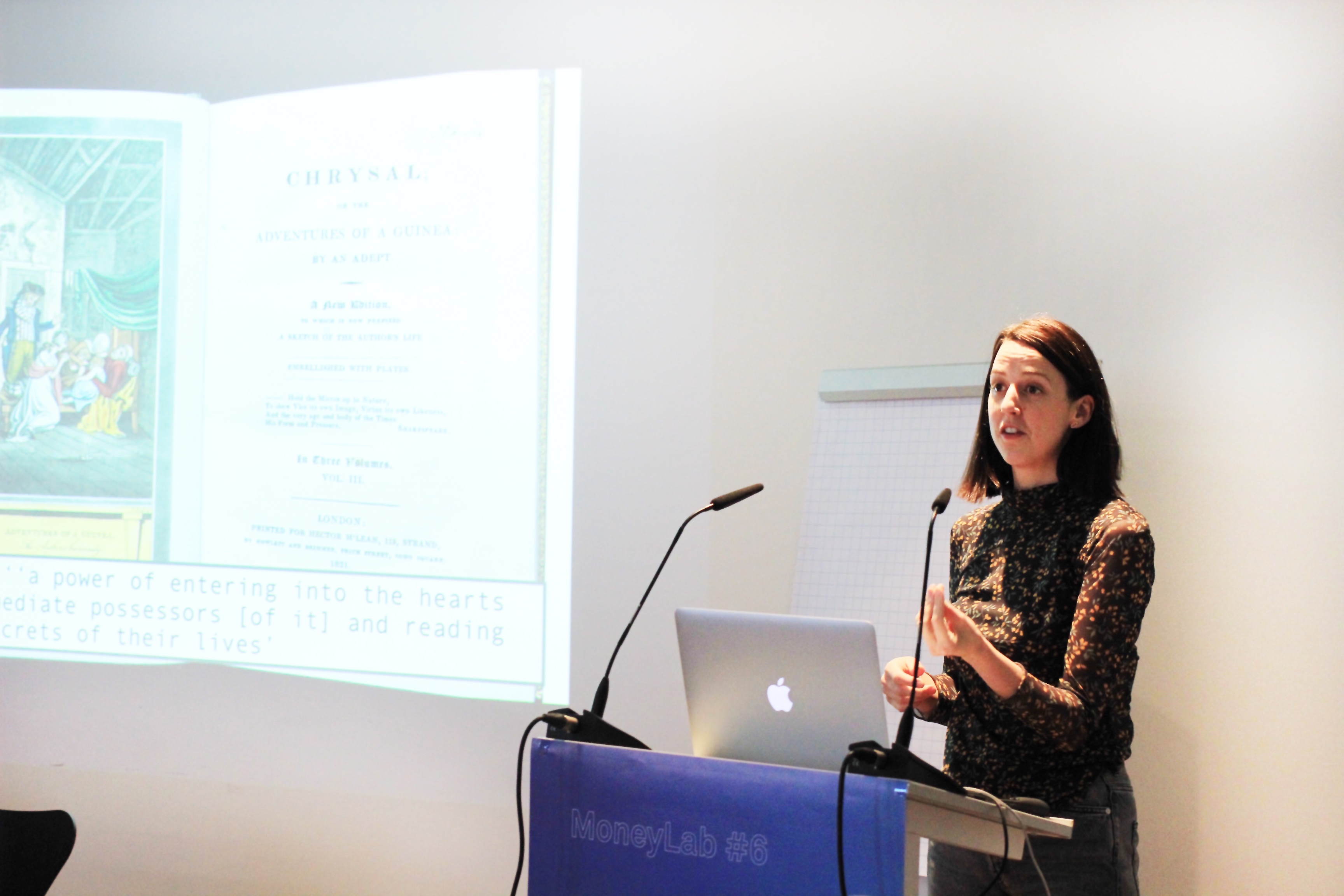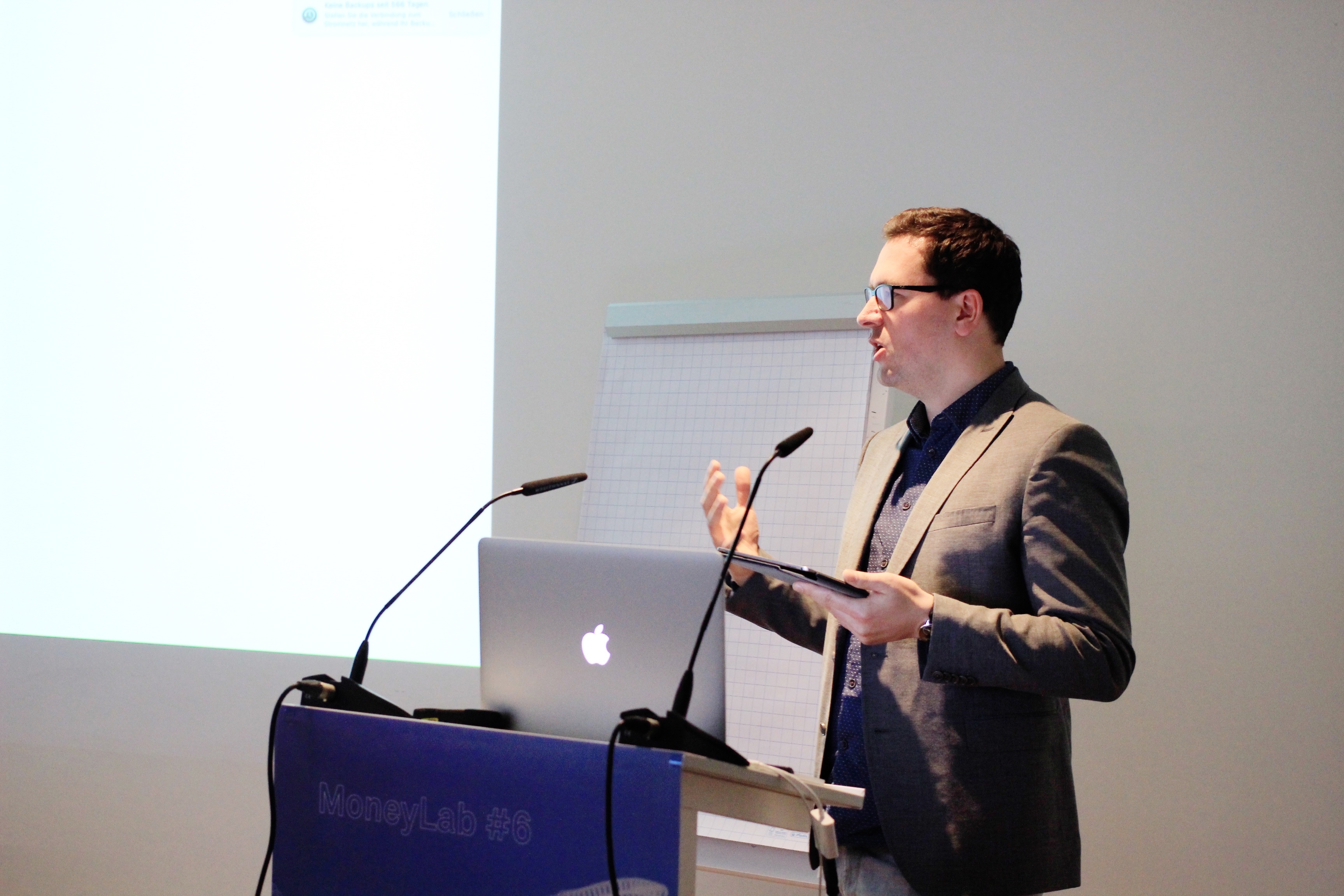New infrastructures of financial transaction, consumer accounting and high frequency trading shift the relation between human and technological actors. According to these new infrastructures I will divide the session in two perspectives, based on their specific relation of technology and human actors. In the first perspective of the session, infrastructures are explored as new forms of collecting individual data as well as platforms that enable new forms of data collecting, trading and surveillance. Josh Lauer, Associate Professor of Communication at the University of New Hampshire, proposed that contemporary payment systems, for example, open the doors to new forms of consumer surveillance. As Erhard Schüttpelz noticed in his anthropologic talk earlier today For the Love of Money, monetary practices can be traced back to modernist utopian visions of ancient empires and modern media, that is, power and economy. As Lauer mentioned in his talk, the concept of the credit card goes back to a 19th century utopia that was characterized by Edward Bellamy. Since that early vision of payment infrastructures, Bellamy assumed that by connecting a single citizen with their own, untransferable credit card, it is possible to identify the users by transferring user data into governmental and economic structures. Like in Bellamy’s utopian vision, consumer credits have become an identifying and accounting practice of consumer data in recent decades. In the 80s, credit card companies like American Express began to sell their customers’ transaction data. The business model of credit card companies in this contemporary period is based on the datafication of consumers through payment infrastructures. Thus, against Georg Simmels philosophy at the start of the 20th century, money is embedded in social exchange processes, media researcher Rachel O’Dwyer argues in her talk. This happens not in the distribution of goods represented by the medium of the credit card as a token, but in the constitution and surveillance of consumers through the medium of the credit card as a datafication of the economic subject. In her talk O’Dwyer sketches this process as a communication process that is driven by gamifying functions of money in digital platforms. Thus, platforms become the new banks. O’Dwyer defines four orders of monetary practices and records. New payment technologies like RFID enable various records and new business models of money circulation. In the first period, money was used as an asset and token since early Mesopotamian cultures. Second order records are monetary practices that can be used as contracts. The analysis of the credit card as a medium of surveillance by Josh Lauer showed features as O’Dwyer’s third order records. By the assembling of various data claims from different transactions, credit cards enable accounting practices through monetary infrastructures. The social credit system in China is an example for the fourth order record according to O’Dwyer. Here money, contrary to Simmel’s theory, is embedded in social exchange. These surveillance practices move towards real time decision-making, action and the channeling of future action. Alongside these record and surveillance, infrastructure politics are surfacing that try to resist these practices.


In the second perspective of the session, infrastructures shift the relation between human and technological actors through the algorithmization of financial trading practices. As an example high frequency trading shows, the automation and integration of machine learning algorithms into economic procedures produces new forms of information asymmetries. High frequency trading is often seen as a form of cybernetic automation of financial labor processes that influence, control or exploit humans at an affective level at a speed that is faster than human perception. This is often understood as a collective capitalist brain that is organized around human labor. But according to media researcher and organizational sociologist Armin Beverungen, high frequency trading isn’t a social or collective practice. In his talk he suggests that algorithms used in high frequency trading are actually quite stupid, because they have to be short to run fast. In any case, they are constructed on the basis of training data and not by collective consciousness practices. According to this observation Beverungen argues that they are not collective in the way they are described in most of the contemporary discourses about financial trading (for more information have a look here). The logic of high frequency trading reduces capital to the logic of calculation. Observing the practices of high frequency trading in relation to the human-technology interaction infrastructures, Beverungen observes that in the practice of high frequency trading, humans operate with algorithms in a constant loop. Contrary to the wishes and hopes of many traders and economic theorist, high frequency trading shows the limits of labor automation by the use of algorithms rather than the anticipated potentials for the financial labor infrastructures. Because of the rising complexity of high frequency trading human labor is still necessary in financial markets. But similar to the already mentioned surveillance infrastructures of contemporary credit cards and payment practices, humans and technologies shift perspectives in high frequency trading. They become observers of acting technology, as sociologist Karin Knorr Cetina picked up in her talk. This is what she calls ‘agentic media’ – media that has action functions that can interact with human labor but aren’t determined by them. Situations like a flash crash, Knorr Cetina detected in her talk, are such situations of agentic media. In a flash crash algorithms trade on their own and the results in a price structure are not reasonable for human actors anymore. According to Knorr Celina’s talk, there are three major transitions in financial trading from streamers to scopes and algorithms. By the 80s, scoping media did not just intermediate actions anymore. Without screens and electronic trading technologies trading was impossible (watch this for more information). The shift of the human perspective in trading established in the third transition by algorithmic infrastructures and the complete automation of financial trading in high frequency trading caused the flash crash. The last pair of this last session of the first day showed that different developments in payment infrastructures and financial trading like the consumer surveillance by credit card technologies or the flash crash as an effect of financial trading automation are effects of a shift of the relation between human actors and technology.




